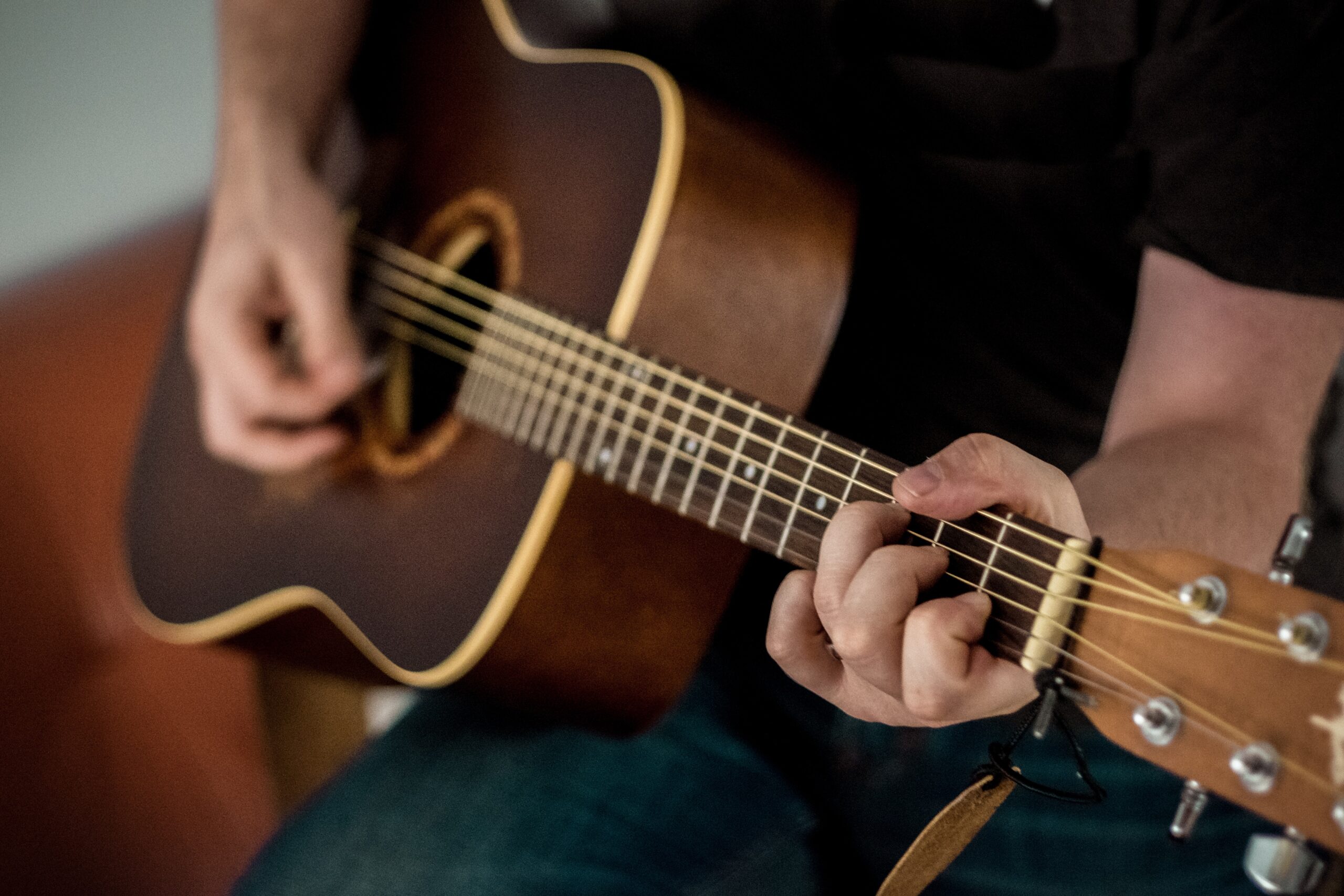Playing the guitar is one of those skills that might seem daunting to learn, but there are quite a few long-term benefits to enjoy after you’ve adopted the proper mindset. Below are seven practical tips to help you learn the guitar in no time.
Here are 7 Tips for Teaching Yourself To Play Guitar
1. Work Within Your Budget
If you don’t own a guitar yet, the first step is to buy yourself an affordable one. You might be tempted to run out and get a top-of-the-line Fender, but you’ll probably want to buy something under $100 until you get a better sense of your level of dedication.
2. Start With the Fundamentals
There are a few different schools of thought when it comes to learning the guitar. Some instructors insist that their students begin with scales, which can sometimes be overwhelming for a beginner. Other techniques emphasize learning the absolute basics of guitar playing.

Specialists from professional Essay Writing Help service emphasize, that a great place to start is by memorizing all of the parts of the guitar, including what they do and what to expect. Here’s an example: Many uninformed, would-be guitar players end up returning their guitars because the strings hurt their fingers. If they had started with some basic research first, they’d have known what to expect.
3. You’re Not Hendrix…
An important point to remember is that progress will be slow, at least at first. You’re not going to be playing like Hendrix or Petrucci on your first day. “Mary Had a Little Lamb” might feel like an ignominious place to start if you’ve got terabytes of death metal on your computer, but it’s a great way to learn basic playing techniques before you move on to something more challenging.
4. Build up Your Strength
You might have biceps the size of a cantaloupe, but if you don’t have strong fingers, you’re going to have a bad time. Make a point to do basic exercises every day to build up strength in your fingers and avoid painful cramping.
5. Find a quiet place to practice
If you’re in college, don’t practice in your dorm room. Not only will you lose focus, but you’ll annoy everyone else around you. When I was learning to play at Vista College in Texas I found that they had special music rooms just for practicing. They were sound-proof, so I didn’t have to worry about sounding like the beginner I was.

6. Don’t Neglect the Strumming Technique
Watching somebody switch between chords by strumming might seem deceptively simple, but in reality, there’s a lot of control going on. You’d do well to start slowly, using a basic up and down pattern. After you’ve got the basics down, you can give it a shot with faster tempos
7. Then There Were Scales
Again, this methodology differs from other lesson plans out there, but it’s still a good way to ease yourself into more difficult techniques. Once you’ve mastered strumming and you’ve strengthened your fingers, you can move on to learning the basic scales – and there are lots of them.
Above all, remember to make time to practice. Thirty minutes to an hour per day is ideal. Chances are good you’ll want to spend even more time after you get into the swing of things.
Watch this space for updates in the Hacks category on Running Wolf’s Rant.
Like what you just read? Subscribe To Our Newsletter to stay in the loop.
Feel free to explore our website or check out our Featured Articles.
Looking for a gift for that special person in your life? Check out Netflorist.co.za, South Africa's top online florist and gift service. They offer flowers, gifts, and hampers for all occasions AND reliable nationwide delivery.



